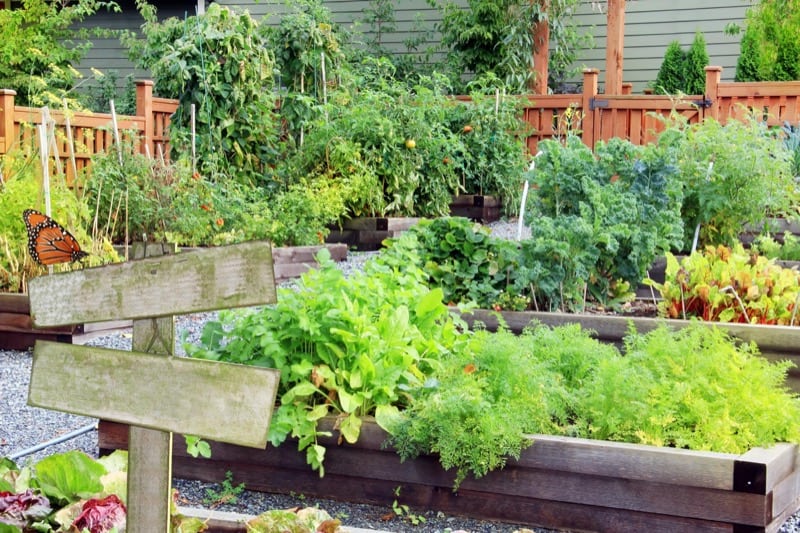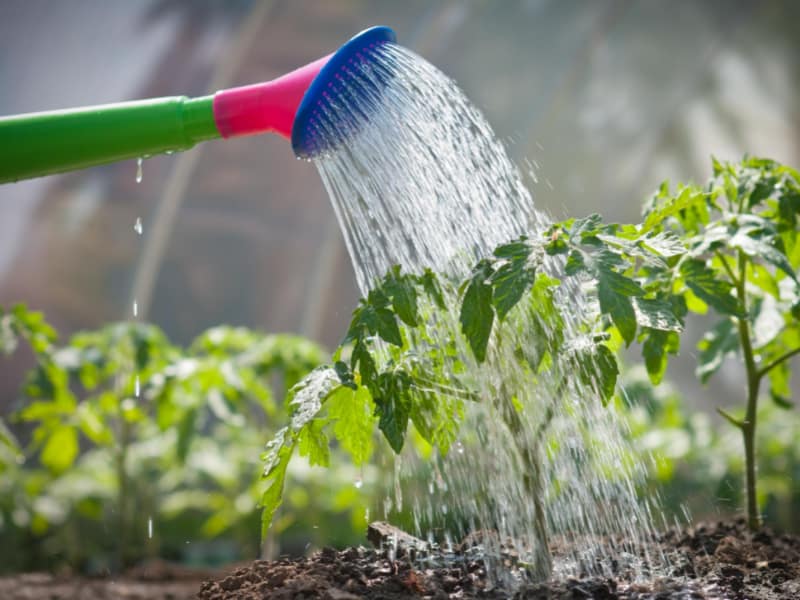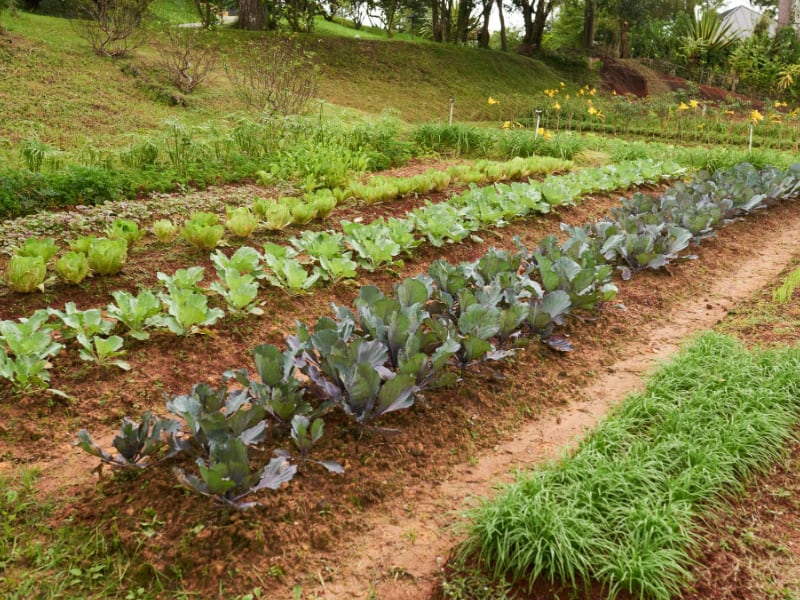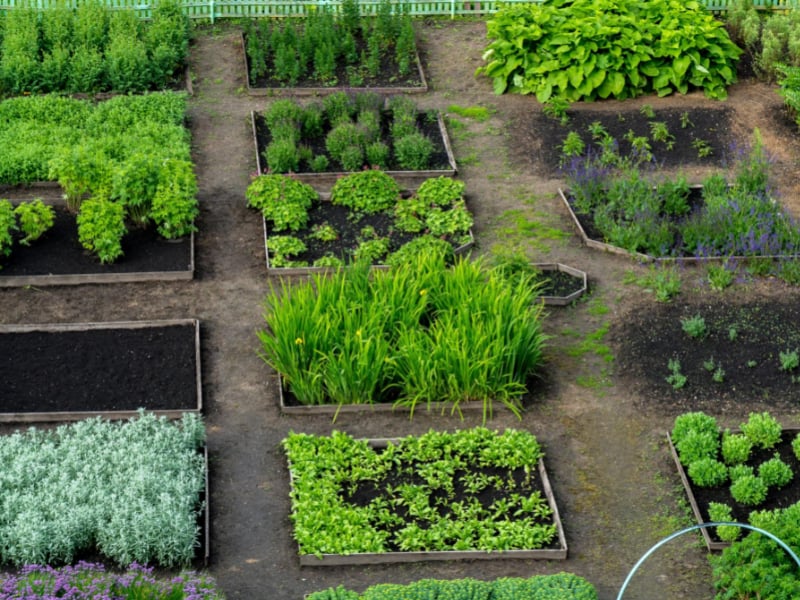Growing vegetables is a great way to get fresh food year round. But growing veggies takes time and effort. And if you’ve never grown anything before, it can be intimidating.
There are many ways to grow vegetables faster without sacrificing quality. In this article, I’ll share the top tips that will help show you how to grow vegetables faster and easier than ever before.
I’ll also show you how to make your vegetable garden even greener and healthier.
How to Make Your Vegetable Garden Grow Faster
Gardening requires patience and hard work. You need to grow a lot of plants before you see any results. To get the most out of your time and effort, you must use proper techniques and care.
A healthy vegetable garden starts with great soil. You’ll also need to warm up the soil by using heat mats or other methods. Watering and weeding should be done regularly throughout the season. If your plants seem to be lagging, check your soil and make sure it’s getting enough water.
Most people find fulfillment in growing vegetables that produce at their greatest possible potential. Growing plants requires careful attention. Plants need light, nutrients, and moisture to grow big and strong, just like people do. Gardening is about nurturing your plants, just as you nurture yourself.
Let’s start into the top tips to help vegetables grow faster.

1. Nourish Soil with Organic Material
Nutrient-rich soil is vital to growing healthy plants and there’s no nothing better than organic materials. Compost and leaf mold can help nourish your soil and make it stronger. You can make compost piles yourself for free by using yard waste, food scraps, and other organic waste.
Learn How to Start Composting and the Best Compost for Vegetable Gardens.
Organic matter should be added to the soil in winter to allow it to incorporate into the ground before the growing season starts in the spring.
Top up with more organic matter in the growing season. Lay this material down to create a 2-5 cm (1-2 inches) layer around the vegetable plants. This will help to slow water loss and suppress weeds. Save yourself time by using this method.
Read more about Soil Amendments and Soil Conditioners.
2. Feed Your Plants
Plants need nutrients to thrive. Liquid seaweed is an excellent source of nitrogen. Comfrey tea is also a powerful plant tonic. Cut comfrey leaves can be draped over plants. Adding comfrey leaves to the compost heap speeds up decomposition.
Learn more about Fertilizers for Vegetable Gardens.
3. Collect and Use Rainwater
Rainwater is the best option to water vegetable gardens. Rainwater is softer than tap water, and contains fewer contaminants.
Rainwater is at a pH level that encourages plant growth. Rainwater is collected in barrels, and can be used to water vegetable gardens.
Depending on where you live, your city’s municipal water can contain chlorine and fluoride. If that’s the case, it’s best to leave the water out for 24 hours to allow the contaminants to dissipate as much as possible before using them on your plants.

4. Grow in Dedicated Garden Beds
Growing in beds allows you to control the amount of sunlight each plant receives. It also makes it easier to weed and harvest your crop.
If you have a large area to cover, consider planting several different types of vegetables in different beds. For example, radishes, carrots, lettuce, and spinach all prefer full sun. On the other hand, tomatoes, peppers, eggplant, and cucumbers require partial shade.
You don’t want to overcrowd your bed, since having too many plants will lead to nutrient deficiencies and poor yields as they all fight for nutrients and water.
5. Choose Vegetable Plants that Thrive in Your Area
Vegetables that are native to your region will perform better than those grown elsewhere. Native plants are adapted to local conditions and climate, which means they’re less likely to suffer from pest infestations or diseases.
For examples, in warmer regions, grow sweet potatoes and tomatoes. In colder regions, grow chard and cabbage that are able to withstand the colder weather.
Choose varieties that have been bred for your climate. Early varieties grow fast, but they won’t survive long if you’re living in an area with extreme weather conditions. Heat-tolerant varieties grow well in hot climates.
You can also Grow Vegetables Indoors and with Indoor Smart Gardens.
5. Make Use of the Shade
Shady areas are great for growing crops that need less light. They include lettuces, Asian greens, leeks, and parsnips. These crops should be planted in the fall when the weather is cooler.
In the spring, transplant these crops into sunny spots. You’ll get a head start on harvesting your crop.
6. Extend the Growing Season
The longer you can make your growing season, the greater the vegetable plant yield. The key is to extend the time between frost dates. This way, you’ll have a continuous supply of fresh produce throughout the year.
To do this, select varieties that mature early. Plant vegetable seeds indoors in late winter or early spring, then move them outside after the last expected frost date.
Planting earlier means you’ll get more crops out of your garden. You can use cold frames or row covers to protect plants from frost. Cloches also help extend the harvest season.
You can also build and use a greenhouse to grow vegetables. Greenhouses provide protection from harsh weather, and they keep temperatures warm enough for tender seedlings.
7. Space Out the Plants
Spacing your plants correctly will allow them to grow properly, and allow them to increase their size and overall yield. When spacing out plants, you’ll need to consider how much space each individual plant needs.
This includes the width of the rows, the distance between the rows, and the distance between the plants within the rows.
When choosing a spacing method, remember that larger plants take up more room. If you plan to grow multiple varieties of a single type of plant, it’s best to space them further apart.
Square foot gardening allows you to plant more closely together. This makes the garden bigger.

8. Companion Plants
Companion planting is a method of gardening that combines two different types of plants together. This allows them to work together to create more growth than if they were planted alone.
Some examples of companion plants include: marigolds near corn, beans, and squash; basil next to tomato plants; and nasturtiums around eggplants.
9. Control Weeds and Pests
Weeds compete with crops for nutrients and water. To control weeds, try using mulch around the vegetables. Mulching helps prevent weeds by keeping moisture close to the ground where it can nourish roots. se straw or untreated grass clippers to control weeds.
If you notice that insects are eating your crops, you may want to invest in some pest controls. Spraying insecticides directly onto the leaves of your plants works well against specific pests.
Keep watch for signs of disease and pest infestation, and treat them promptly when you see them. Diseases are usually fatal.
Rotate crops in subsequent years, and choose disease resistant varieties. Insects can be controlled by hand or with insecticides.
Learn about Organic Pest Control Methods.
10. Preventative Pest Control
Preventative pest control methods are those that reduce the risk of pest infestation and damage, rather than eliminating it after they arrive. They’re generally less expensive than other pest control methods.
These methods include crop rotation, covering crops with floating row cover, and applying natural predators like ladybugs and hoverflies. They will help control common pests like aphids, mites, and mealybugs.
Insects can be kept away from plants by placing barriers over them. These barriers like row covers act as a physical barrier, preventing bugs from landing on your plants.
Slugs should be removed from hiding places. Every few weeks, pest control should be done by torchlight.
Flowers should be planted in the vegetable garden too because they can attract other natural predators! Alyssum, calendulas, and poached egg plants are popular ones.
11. Start Seeds Indoors and Use Transplants
Starting seeds indoors means that you don’t have to wait until spring to get started. You can begin planning and preparing your garden right now. Once the seeds germinate and grow into seedlings, transplant them outdoors.
You can also use transplants instead of starting seedlings from seed. This saves time and money, and makes your garden look better.
Transplants are very useful for growing vegetables. You can start them early, and plant them outdoors when weather conditions are favorable. Avoid tall, leggy, and pale-colored plants. Water your transplants often to prevent transplant shock.
12. Find Sunny Locations for Vegetables
Most vegetables need at least six hours of sunshine each day to perform well, but some vegetables require more than that. You should choose the sunniest location for your vegetable garden.
Also, make sure that your soil is warm enough to germinate seeds and grow quickly. Raised beds help warm up the soil faster in the spring.
Try using floating row covers to protect your plants from frost. Black plastic helps conserve water and reduce weeds. Cloches help protect individual plants from frost and other weather conditions.

Grow Vegetables Faster Final Thoughts
Growing vegetables is fun and rewarding. It’s important to plan ahead, though, and prepare for the challenges that come with gardening.
The tips above will help you grow vegetables in your garden faster.
Growing your own food is an excellent way to save money and eat healthier. But it takes work and patience to build a successful garden.
Other articles that you might be interested in:
- Fruits and Vegetables that are Man-Made
- Organic Vegetable Gardening Tips
- Organic Gardening Benefits
- Why Gardening is a Great Hobby
- Gardening is Good for the Environment
- Lettuce Grow vs Tower Garden Comparison
Grow Vegetables Faster FAQs
Why is my vegetable garden growing so slowly?
Vegetable gardens take longer to grow than flower gardens because vegetables need more sunlight, fertilizer, and water. Vegetables also need more space than flowers. To help speed up the process, try planting seedlings. Also, make sure you fertilize your garden regularly. Fertilizer feeds the roots and encourages healthy growth.
How can I speed up my outdoor vegetable growth?
You can speed up your outdoor vegetable growth by choosing a sunny spot, using rainwater, nourishing the soil, and feeding and protecting your plants from insects and diseases. If you’re having trouble getting your plants to grow, consider adding compost to your soil for more nutrients.
Which fertilizer makes vegetables grow faster?
The best fertilizers for vegetables depend on what you’re growing and the nutrients that they need. Organic fertilizers will provide all the necessary nutrients your plants need without harming the environment or polluting groundwater.
Fertilizer is used to help plants grow and develop. Fertilizers come in different forms, including liquid, granular, and pellets. Each form has different benefits. Liquid fertilizers are usually applied directly to the roots of the plant. Granular fertilizers are usually spread out over the top of the soil. Pellets are usually placed into the ground and then covered up with dirt.
How do you speed up seedling growth?
Seedlings need light to grow. To help them out, place them under artificial lights if there’s not enough natural light. Make sure to keep them away from direct sunlight. Seedlings also need warmth to grow. Grow them indoors to keep them out of the cold. Keep them away from cold drafts from doors and windows.
How to grow plants faster in pots?
Plants can grow faster in pots by giving them the proper environment and care. Pots should have enough drainage holes on the bottom to let excess water drain out. Plants should be watered regularly, especially during hot summer days when evaporation is high. Avoid using soil from the yard because it could carry weeds, insects, or diseases. Garden centers sell a variety of soils suitable for potted plants. Use them carefully by mixing different kinds together.

